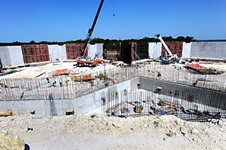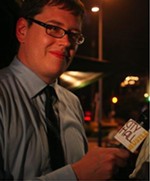Auditor's Report: Staff misled city board on water plant site
By Wells Dunbar, Fri., Nov. 3, 2006
At press time Wednesday, the Chronicle acquired an investigative report issued by the City Auditor's Integrity Unit regarding WTP4's controversial site selection in the northern section of the Cortaña tract. The report arose from a city employee's whistle-blower complaint received in October, stating that Environmental Board member Karin Ascot was misled by city staff when she asked if another viable plant site in the Cortaña tract existed. (Cortaña is a large tract of land in Northwest Austin; over the intervening years, the Balcones Canyonlands Preserve sprung up around the site, reflecting environmental concerns about the area.) The complainant also alleged that City Council was similarly misled about the existence of an alternate site, and moreover, that the employee was instructed to destroy the alternate-site analysis.
"The information we gathered through our investigation indicates a second site within the Cortaña tract does appear to meet the preliminary screening criteria for initial consideration as a potential alternative site for WTP4," reads the report. This alternate site was apparently found by city staff and not by the contractor hired to manage site selection (never named as such in the report, but Alan Plummer and Associates.) After APA conducted its site analysis in 2005, but before the presentation to council, city staffers conducted their own "geographic information systems" analysis of the tract, which found an alternate site. "The CAIU confirmed the existence of a site within the Cortaña tract, other than the previously identified north site, which appears to meet the preliminary screening criteria," reads the report. Despite this, the contractors proceeded to write off the site "for reasons other than the preliminary criteria." This was not done according to the "methodical process" used to gauge other sites, but rather after an informal "windshield survey" (that is, a literal drive-by) of the site, whereby the surveyors concluded the site was under the 50-acre criteria – the auditors' independent analysis found that the site contains approximately 52 acres.
The auditor's report also found Environmental Board member Ascot "may have been misinformed" about the site, though stronger words may be appropriate: "Though the alternate Cortaña site had been identified ... the WTP4 team responded in a written memo to the board member that no such site existed. Based upon the information we gathered ... this statement appears to be false. Soon after this response was issued, the employee who brought this to the CAIU's attention suggested to his or her supervisor that the statement should be retracted. ... However, the supervisor chose not to retract the statement based on the consultant's analysis and conclusion that the site did not meet the screening level criteria." Again, it's worth noting that the criteria appeared to be arbitrarily changed to a more informal standard at that point.
The CAIU concluded City Council wasn't similarly misinformed of the site's existence. While the second Cortaña tract was not presented as a viable alternative, its supposed shortcomings came up in the consultant's presentation to Council. Lastly, the CAIU couldn't prove the whistle-blower was instructed to destroy records of the site analysis, as both parties interviewed delivered "conflicting testimony."
Download a PDF of the City Auditor's Report on Allegations of Integrity Violations Involving WTP4 Site Selection Process.Correction: In the original version of this story, we incorrectly said the Cortaña tract was purchased by the city in 1984 as a site for WTP4. This description actually refers to the Bull Creek macrosite, where plant construction is said to have begun. The Chronicle regrets the error.
Got something to say on the subject? Send a letter to the editor.








